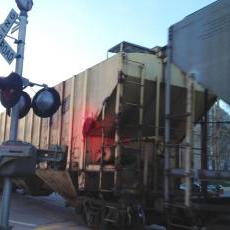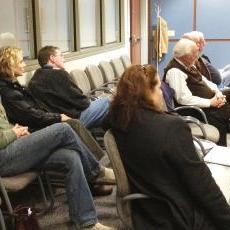






 Streets crisscross the isthmus connecting the largely residential neighborhoods that border Lake Mendota with the Williamson-Marquette area. A railroad slices between these two communities, and it has for over 120 years.
Streets crisscross the isthmus connecting the largely residential neighborhoods that border Lake Mendota with the Williamson-Marquette area. A railroad slices between these two communities, and it has for over 120 years.
Despite longstanding interactions with the tracks and crossings, the Wisconsin & Southern Railroad has petitioned the city to close the crossings on Brearly, Blount and Livingston Streets citing safety concerns. By closing the streets to through-traffic—vehicles, pedestrians and bikers—officials seek to decrease the probability of a collision.
Citizens who live, work and visit the East Rail Corridor say they respect the tracks. They know danger is possible, but believe it is manageable.
In the United States, over 357 people are killed in accidents and collisions with trains each year, according to data from the Federal Railroad Association collected in 2006. There hasn’t been an accident on the tracks in the Williamson-Marquette neighborhood since the 1970s.
“Just because there’s not an accident today doesn’t mean there won’t be one next week,” Investigator for the Office of the Commissioner of Railroads Tom Clauder said.
In a hearing held in March, Wisconsin & Southern’s Superintendent of Maintenance Ben Meighan cited close calls between trains, pedestrians and vehicles to substantiate the proposed closings.
As community members await a recommendation from the Commissioner of Railroads, they remain opposed to closing the streets.
“People run yellow lights too,” neighborhood Alder Marsha Rummel said.
Madison resident Angela Gargano is also concerned about rail safety. Gargano began to speak out after her 17-year-old sister was struck and killed by a Wisconsin & Southern train in 1994. She opposes the closings and instead advocates for gates at each crossing.
“It sounds like the crossings will be physically closed with a barrier. What they’re really doing is dead-ending the streets. I think that common sense tells us that pedestrians and bikers are likely to just cross over that spot instead of going several blocks out of their way to cross at a slightly safer crossing,” Gargano said.
Everyone wants a safe interaction with the railroads, according to Rummel, but residents and business owners are concerned the closings would isolate the area and impede the proposed development efforts.
“It means less opportunities to redevelop this rail corridor as an employment center, which is what is called for in our adopted plans,” Rummel said.
Business owners who have opened establishments or relocated to the near-east area say closing the crossings would decrease the very accessibility that first attracted them.
Rico Sabitini opened his combination bar and club Plan B in August 2009. He chose 924 Williamson St. because of its proximity to thoroughfares East Washington Avenue and Williamson Street, he said during public testimony on the proposed closings Feb. 16. Thousands of patrons frequent his business each week, many from the downtown area. Closing the side streets would make transit to Plan B less convenient, Sabitini said.
The financial viability of the near-east area is also at stake as potential developers cite the importance of connections across the isthmus, Rummel said.
For neighborhoods in Alder Bridget Maniaci’s district bordering Lake Mendota, the proposed closings would impact the growth, Maniaci said.
“We’re in the process of trying to do major economic development on the corridor, and the success of those businesses has to do with their accessibility from the surrounding neighborhoods,” she said.
According to Maniaci, the closings would “significantly alter the patterns of access and transportation” in the area, which is problematic when the success of a $35 million multi-use development opportunity depends on accessibility.
The project involves collaboration between Gebhardt Development and Hovde Properties to build commercial and residential space on the 800 north block of East Washington Avenue. They hope to break ground in May, Maniaci said.
“Livingston is going to be very much impacted by this closure, especially when these folks are trying to bring economic development to the city and they have to go before banks and investors and say, ‘Please come here. Please invest in the process,’” Maniaci said. “It makes it very difficult to make the case to do so when access to this property directly on this site is impacted.”
Maniaci is also working to help facilitate another development proposal on the 700 south block of East Washington. She would like to see the projects under construction by fall.
“In total we have eight acres of property that we are working on developing directly on one of the intersections affected by this,” Maniaci said.
Downtown Madison, Inc., an association that works with business owners to promote community sustainability, also opposes the closings. President Susan Schmitz said the near-east side is experiencing a renaissance supported by new businesses opening and moving to the area. The closings would be “extremely detrimental” to that progress, she said.
“When people see a healthy functioning downtown that offers so much, it’s good for a region, not just the city,” Schmitz said.
After the Office of the Commissioner of Railroads issues a proposed statement approving, adjusting or denying the petition filed by Wisconsin & Southern Railroad, citizens will have a 15-day window to submit comments. Until then, cars, bikers and pedestrians will continue to cross over the tracks at Brearly, Blount and Livingston streets.
“It’s not like an assembly line where you have to prevent injuries. It’s part of a grid and a network where we want to have as many options as possible,” Rummel said. “So we want rail, but we don’t want it at the expense of a vital neighborhood.”
|
|
|
Welcome to the Madison Commons, a website designed to provide news and information about all of Madison's neighborhoods and a crossroads for the discussion of community issues. The name comes from the idea of a village commons, a place for news, talk, debate, and some entertainment, too, that's open to everyone.
All rights reserved. Read more about the Madison Commons and its partners.

